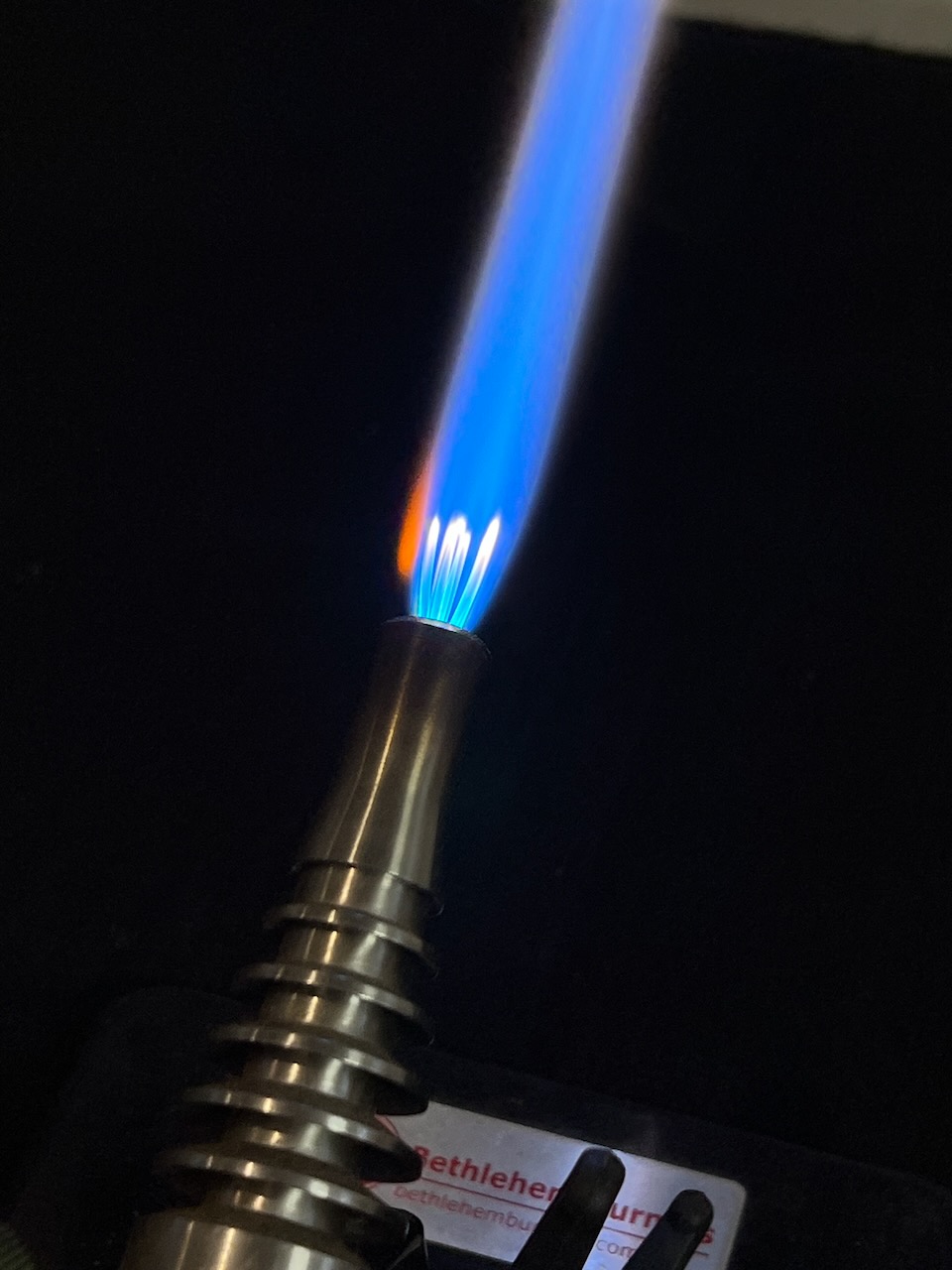
I decided that to become more skilled, I would need my own torch and materials so I could practice and make as many mistakes as needed to acquire a specific glass-blowing skill. I found a torch on eBay, some hoses and fittings on Amazon, a tank of propane from my barbeque grill, but then had to figure out an oxygen source. I also needed an exhaust system so I wouldn’t asphyxiate while heating glass from my propane-burning torch.
The exhaust system was simple in principle, but of course, the actual implementation was not. I wanted to create a “glass working station” in a corner of my garage/workshop—a recently built structure with a 10-foot high ceiling with no explicit ventilation. This has already been a limitation when I wanted to work with paints, adhesives, or solvents that required a ventilated area, so I welcomed the excuse to create a ventilation zone for my shop.
Professional paint and chemistry booths are expensive, so I looked for kitchen exhaust hoods. I discovered that they have an enormous price range which depends almost entirely on the current popular style and appearance of the sheet metal hood, and almost nothing on the exhaust rate of the fan. The typical kitchen exhaust rate was less than I wanted anyway, so the fan didn’t matter—I would be replacing it. I really wished I could buy the exhaust hood sans fan motor, but they are rare. And when you find them, they cost the same or more. It’s the external visual style you are paying for.
I found a low-cost, unattractive but functional, kitchen exhaust hood with a low-power motor that I could replace with one that was more capable. It seems a huge waste, but these are the tradeoffs in the DIY world.
Continue reading